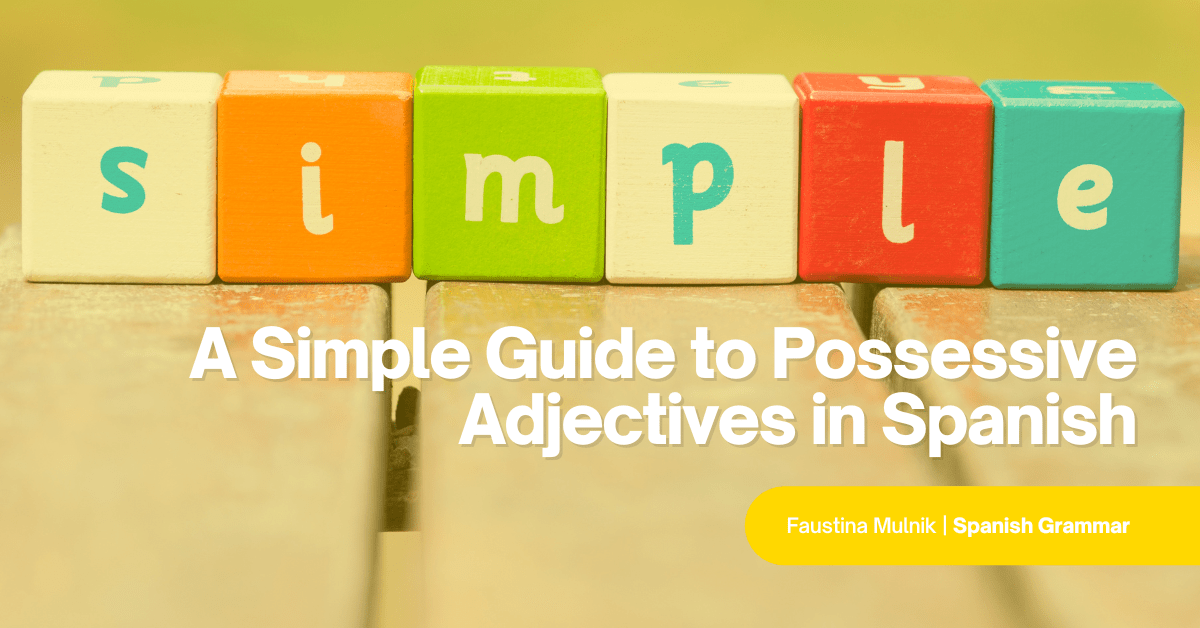
Solicitar vs Aplicar in Spanish: What’s the Difference?
Solicitar vs aplicar: that is the question. These two words can cause some confusion depending on whether you’re studying Spanish from Spain or its Latin American version. Originally these two words had totally different meanings. However, since all languages constantly evolve, the English influence on Spanish has made the difference less clear. Can aplicar mean “to apply for a...Read More
35 Regular -AR Verbs in Spanish and How to Conjugate Them
-AR verbs in Spanish are some of the most fun verbs to use! This list includes the most common -AR verbs you’ll find in Spanish. You can begin to study their conjugations or start using them right away in their infinitive form. The infinitive is the basic form of a verb, without it being conjugated or connected to a particular subject. Verbs express action. You also use them when...Read More
Dejar vs Salir in Spanish (Plus: Parar, Quedar, and Permitir)
Is dejar and salir causing you trouble? They both seem to translate to the English word “to leave,” don’t they? Ella me dejó.She left me. El tren ya salió.The train already left. What’s the difference between dejar vs. salir? And what about: dejar vs. parardejar vs. quedar, and dejar vs. permitir? So, if these pairs of Spanish words worry you, keep reading to get an...Read More
38 Regular -IR and -ER Verbs in Spanish You Can Master Today
Regular IR and ER verbs in Spanish are similar to AR verbs. They are considered regular because when conjugated, their root form doesn’t change. IR and ER verbs in Spanish are fairly simple to master. They are conjugated almost exactly like the regular AR verbs in Spanish, so if you’ve mastered those, you shouldn’t have any problem with these. But it’s always good to...Read More
‘Haber De’ vs ‘Haber Que’ in Spanish: What’s the Difference?
When you start studying Spanish, you learn the verb haber quite early, and it doesn’t seem very complicated. However, later things start to change. Apparently, it’s enough to add small words such as “de” or “que” to “haber to get a different meaning. But the meaning doesn’t always change! Why? What’s the rule? If you’re one of the desperate learners trying to untangle the...Read More
A Simple Guide to Possessive Adjectives in Spanish
Quickly learn how to express ownership using possessive adjectives in Spanish with this helpful guide! In this blog post, I go over the two different forms of possessive adjectives in detail and explain the difference between possessive adjectives and pronouns. There’s even a free printable worksheet and interactive quiz at the end for extra practice. Get ready to discuss your...Read More
What Does ‘Mande’ Mean in Spanish?
Have you ever heard someone using the word mande in Spanish? It’s usually a way to reply to a question not understood or to ask what’s needed. Well, this simple and apparently harmless word has an incredible backstory that strongly resonates in the Mexican past. Keep reading to discover why Mexicans reply with a strange mande or mande usted when called. Learn the actual meaning of...Read More
A Massive List of Spanish Adjectives and How To Use Them
Are you improving in your Spanish fluency, but still struggling to describe people accurately? This is a normal stage in most students’ Spanish-learning process. You may have mastered the grammar rules, but are still short in vocabulary. I’m here to help you solve that! Keep reading to learn what adjectives are and how to use them—discover a massive list of...Read More
What are Spanish ‘Go Verbs’?
Do you know what Spanish “go verbs” are? What about “yo-go” verbs? These two terms actually mean the same thing—they refer to a category of irregular Spanish verbs. When conjugated in the present indicative, these verbs end in -go in the first person (yo) form. For example: Yo hago mi tarea. (hacer)I do my homework. Yo pongo mi cuaderno en el escritorio. (poner)I put my notebook...Read More
